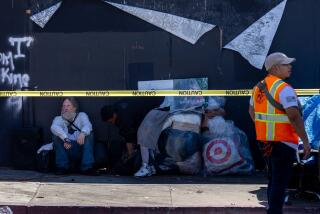L.A. wants $1 more per student per day for after-school programs

- Share via
Just one more dollar. That’s what California lawmakers are asking for — one more dollar per student, per day, for after-school programs in the state.
That would raise the daily rate from $7.50 to $8.50, creating a $73.26-million increase for the 2016-17 school year. The Los Angeles Unified School District would get about $10 million more for after-school programs.
The state has allocated the same amount of money to after-school programs across the state since 2006 through the After School Education & Safety Program, which voters approved in 2002 through Proposition 49.
These programs allow parents to work full-time while their children are in a safe environment, and provide academic and extracurricular support that students might not receive at home, L.A. City Councilman David Ryu said in a news conference Friday, after the City Council approved a resolution supporting the increase.
In the last 10 years, the cost of living has increased, and L.A. Unified has adopted a higher minimum wage of $15 per hour that goes into effect in July.
The program distributed up to $550 million annually to schools across the state. L.A. Unified received $78.6 million for this school year.
ASES funds after-school activities for about 82,500 elementary and middle school students in the district, ranging from tutoring to sports to art. L.A. Unified will also use about $7.2 million from the district’s general fund this school year to accommodate additional students.
But as the costs of these programs have increased and the funding hasn’t, providers are finding themselves having to whittle down their offerings.
See more of our top stories on Facebook >>
Take LA’s Best, for example, the district’s largest provider of after-school programs. LA’s Best is a public-private partnership that gets most of its funding from ASES. The organization serves 194 schools, but has had to reduce field trips and staff training over the last few years, said Eric Gurna, president and CEO of LA’s Best.
“We only have the dollars to pay for the time that the staff are with the kids,” Gurna said. “We’ve had to cut back to the most basic training around safety, child abuse reporting and basic youth development practices.” The extra training is necessary because they often hire young people from the communities the programs serve who need to learn how to effectively serve kids after school.
On Friday, the L.A. City Council approved a resolution supporting the bill, AB 2663. The resolution is a symbolic gesture. It holds no weight but puts pressure on the Legislature to pass the bill, coming from the city with the state’s largest school district.
These programs prevent some students from becoming casualties of the school-to-prison pipeline, L.A. Schools Police Department Chief Steven Zipperman said during the news conference Friday.
“If they’re not there after school...then they will be out in the streets,” Zipperman said. “And they’re either going to become a victim, or they’re going to be a suspect later on.”
Gov. Jerry Brown’s proposed budget increases state K-12 funding through the Local Control Funding Formula, which gives local districts more power to decide how to spend state dollars, and allocates additional money to low-income and other vulnerable students. But L.A. Unified officials wrote in a letter to the governor in September that those dollars are still limited, and there are too many school-day obligations for there to be LCFF money for after-school funding.
Brown’s office declined to comment on the bill. However, the administration opposes state increases to after-school funding because they would come from the same pot of money as LCFF funds, said Department of Finance spokesman H.D. Palmer. So an increase in after-school money would mean a decrease in LCFF dollars.
A dollar more is a drop in the bucket, but will still help, said Alvaro Cortés, the district’s Beyond the Bell executive director. Beyond the Bell is the district’s after-school department. He said the biggest cost increase comes from the $15-an-hour minimum wage the district will be required to pay employees beginning this summer, as well as continued increases of healthcare and supplies.
“That would stop the bleeding … but long-term solutions are necessary,” Cortés said. “We can’t ask for a dollar every couple of years.”
The bill would require the state to adjust grant funding annually based on cost-of-living increases.
Reach Sonali Kohli at Sonali.Kohli@latimes.com or on Twitter @Sonali_Kohli.
ALSO
Granada Hills Charter wins state academic decathlon
Amid custody battle, 6-year-old girl is removed from her Santa Clarita foster parents
Glendale schools first in U.S. to make Armenian genocide remembrance day an official holiday
More to Read
Sign up for Essential California
The most important California stories and recommendations in your inbox every morning.
You may occasionally receive promotional content from the Los Angeles Times.














